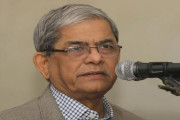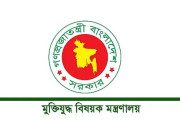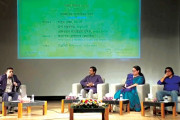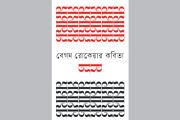Around 12,000 voters living in highrises and posh housing complexes in New Town will vote to elect their representatives on July 8
Arkamoy Datta Majumdar , Bireswar Banerjee Calcutta/Siliguri: Swapanes Mitra, a former employee of the Indian Oil Corporation, had moved to Rajarhat in 2015 even as Calcutta’s satellite city was taking shape.
Eight years later, the septuagenarian faces a predicament.
While Mitra is a resident of a six-storeyed building in the AL block of New Town action area 1 in a fairly urban environment, he is the CPM nominee for seat 28 in Jyangra Hatiara 2 gram panchayat.
For him, getting elected to the panchayat is important because he wants to meet the local demand of bringing the area under some sort of urban governance.
“It is somewhat farcical that we live in a rapidly developing urban environment but are still voting for the panchayat polls,” said Mitra, a former trade unionist.
The Jyangra Hatiara 2 gram panchayat in North 24-Parganas has 30 seats.
Around 12,000 voters living in highrises and posh housing complexes in New Town will vote to elect their representatives at the three-tier panchayat system on July 8. The urban populace makes up voters in eight of the 30 seats in the Jyangra Hatiara 2 panchayat.
About 4,000 other urban people will vote to elect their representatives at the Patharghata, and Rajarhat Bishnupur 1 and 2 panchayats.
Mitra believes that the needs of the urban voters of Rajarhat cannot be met by a gram panchayat. Citing an example, Mitra said a new sewage treatment plant, which had come up in the residential area, had been a problem since its inception. He alleged that garbage trucks were sometimes parked outside the plant overnight with the stench making it difficult for the residents to breathe.
“These are such civic urban issues which the panchayat is incapable of addressing. My priority is to raise my voice for a notified civic administration for eight seats,” he said.
A similar concern was raised by Sudipta Ghosh, a 42-year-old homemaker who is contesting on a BJP ticket in the Jyangra Hatiara 2 gram panchayat.
“If I get elected, I will demand that this area be carved out of the panchayat and brought under civic administration,” she said.
The areas that make up the eight seats are under the jurisdiction of the New Town Kolkata Development Authority (NKDA). An official of the authority has said Schedule I of the New Town Kolkata Development Act clearly states the boundaries where NKDA has powers to act as an urban local body.
This essentially means that NKDA still has the authority to collect property taxes, sanction building plans and construct and maintain roads and parks. That is what has confused residents.
Local Trinamul MLA Tapash Chatterjee said as soon as the rural polls got over, the government would start the process of bringing those urban areas under a civic body. It is likely that the NKDA will be given the necessary powers under the law, he said. However, he did not clarify why the process had not been completed in the last five years.
In the 2018 panchayat polls, there were only two panchayat seats in the New Town area. With the increase in the population and following the delimitation, the number has crossed 10 this time.
“We had hoped that theadministration would take note of the facts that the population was growing in New Town and the city was expanding and hence set up an urban self-governing body that would manage the Hidco-acquired land. But our laws apparently don’t allow that,” said Saptarshi Deb, a local CPM leader.
According to state BJP leader Anupam Ghosh, residents of two posh housing complexes Rosedale and Uniworld City would vote in the panchayat polls. “These are people with fancy lifestyles. Is it even justified for them to vote in the rural polls?” he asked.
About 580km away, the residents of Dabgram 1 and 2, and Fulbari 1 and 2 panchayats near Siliguri face a similar predicament.
The four panchayats are located just outside the Siliguri Municipal Corporation and their area stretches from northwest to southwest of the city.
In the past 10-15 years, there has been rapid urbanisation in the four panchayats, which have some of the finest educational institutions, healthcare centres and high-rise apartments. Uttarkanya, the north Bengal branch secretariat, and the Bengal Safari Park are there.
While a citizen’s group in New Town has called for a boycott of the rural polls, residents of Dabgram Fulbari have said that they don’t feel like voting for the panchayat polls.
The chairman of the New Town Forum, Samaresh Das, said it had gathered 12,000 signatures and sent letters to chief minister Mamata Banerjee as well as Firhad Hakim, the urban development minister. He claimed that Hakim had earlier said that those voters would not have to exercise their franchise in the panchayat polls, but the promise was not fulfilled.
“Are we under the NKDA? Or the panchayat? If we pay taxes to the NKDA, why will we vote in the panchayat elections?” Das asked.
Dibyendu Roy, a teacher and resident of East Dhantala of Fulbari 1 panchayat, said: “We want our area to be included in the municipal corporation as it is not possible for a panchayat to provide us with appropriate civic services. We find no reason for us to be in a panchayat.”
Debasis Pramanik is a former member of Jalpaiguri zilla parishad and general secretary of Trinamul’s Jalpaiguri district committee. He resides in the area.
According to him, the state government is aware of the people’s demands. “In due course, the residents want to vote to elect civic councillors,” he said.










































































































































































